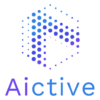Poor posture isn’t just a bad habit. It’s a health risk. Across offices, warehouses, and remote work setups, employees spend hours in positions that strain their muscles and joints. Over time, that leads to musculoskeletal (MSK) injuries. These aren’t rare. MSK disorders are the top cause of workplace injury claims. They drive long-term absences, lower productivity, and high insurance costs. The worst part? Most of it is preventable.
The Real Cost of Ignoring Ergonomics
Ignoring workstation health drains money. For employers, this means frequent sick leave, lower morale, and more claims. For insurers, MSK issues increase payouts and long-term disability coverage. In the U.S. alone, MSK disorders cost over $213 billion every year. That includes surgeries, physical therapy, medications, and lost productivity. One poorly adjusted chair can snowball into chronic pain and months of downtime.
Ergonomic Evaluations Catch the Problem Early
An ergonomic evaluation looks at how people sit, move, and work. It checks for misalignments, repetitive strain risks, and poor desk setups. The goal is to adjust the environment before injuries begin. This isn’t guesswork. With the right tools, evaluations can spot early signs of tension or movement inefficiencies. A well-done assessment improves posture, reduces pain, and makes daily tasks easier. It also shows employees that their health matters. That builds trust.
Old-School Ergonomics vs. New Tools
Traditionally, ergonomic evaluations meant long forms, generic tips, or expensive consultants. That model doesn’t scale. It’s reactive, not proactive. Today, AI can analyze movement with just a phone camera. No sensors. No special gear. Just a short video, and the software identifies risk zones and recommends exercises. That means fast, accurate evaluations for everyone. Whether someone works in a corporate office or from home, tech removes the barriers.
Benefits You Can Measure
Workplace health isn’t a guessing game. Here’s what regular ergonomic evaluations can do:
- Cut MSK injury claims by up to 20%
- Lower treatment costs by up to 30%
- Boost worker productivity and focus
- Reduce absenteeism and presenteeism
- Improve employee satisfaction and retention
Preventing pain is faster and cheaper than treating it. That’s why the return on investment is so clear.
Who Should Get Evaluated? Everyone.
Ergonomics isn’t just for people in pain. It’s for anyone who works in a static position for hours. That includes desk workers, call center agents, designers, developers, and remote teams. Even warehouse or factory workers benefit from posture-aware recommendations. Evaluations help build better habits before problems show up.
Make It Easy with Autonomous Tools
Not every company can hire a full-time ergonomic expert. That’s where digital evaluations shine. With AI-powered tools, each worker can self-assess. The software provides a clear report, practical adjustments, and a routine of simple movements. All personalized. No waiting. No guesswork. Just better posture and fewer injuries.
It’s Time to Treat Prevention Like a Priority
Most health plans react after a claim is filed. That’s too late. Early action means fewer claims, happier teams, and stronger policies. Ergonomic evaluations are low-cost and high-impact. They work as the first step in any MSK prevention program. And they signal a shift—from treating pain to stopping it.
FAQs
How often should ergonomic evaluations happen?
Once a year is a good start, or anytime someone changes their workspace or reports discomfort.
Can remote employees be evaluated too?
Yes. AI tools only need a video or photo to assess posture and workstation setup.
Is this only for office workers?
No. Anyone doing repetitive tasks, lifting, or sitting for long periods benefits from an evaluation.
Do ergonomic evaluations really prevent injuries?
Yes. They identify and correct risky behaviors early, reducing long-term MSK issues.
